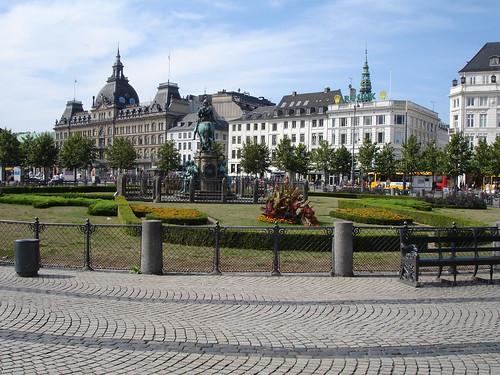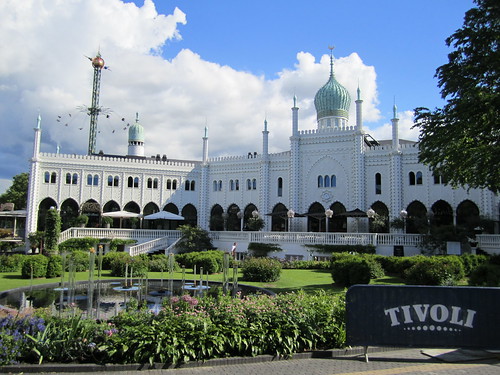The green city and tourist mecca
They say that in Denmark there are so many people and bikes. In this Scandinavian country that hosted the international conference on climate change and has the cleanest water on the continent, initiatives are launched continuously to maintain biodiversity, develop self-sustaining communities, recycling, and reduce the impact dioxide emissions carbon. If the traveler’s first law is «where you were do as the Romans», we present the keys to being a responsible tourist in Copenhagen and to enjoy their eco attractions.

Photography by jimg944
Tours Copenhagen:
Bicycling:
The best way to discover Copenhagen is by bike. With 300 km of dedicated lanes and traffic lights «green wave» for cyclists, the city is fast and safe to move on two wheels. Every day, a third of its population using this means of transport to go to work, one of the highest rates in the world and climb to 2015 to convert 50% to Copenhagen in the first «Bike City». The capital has its own public stock offering bicycles at no cost to citizens (and tourists clean) in eleven strategic locations in Copenhagen. Another option is to take group fun and eco-taxi-bike that goes up to seven passengers.
Visit:
Surprisingly, one of the most modern capitals of Europe to survive a hippie enclave intact. Christiania, or side B of Copenhagen, is an «ecovillage» since 1970 remains free lifestyle and alternative in the heart of the city. Pedestrian in this community, houses are built with recyclable materials from demolition and have solar energy panels. To walk a sunny afternoon to discover the street graffiti, craft shops, art galleries and bars that look before.
If the intention is to move away from the city for a day and connect with a relaxing northern landscape, it is best to take a three-hour ferry to the island of Samso. On this island self-sufficient in the production of renewable resources of wind turbines, visit his academy to learn more about bio-technology.
As responsible tourism mecca, as well as self-sustaining communities, visiting parks Denmark offers energy incineration plants and museum – houses on green architecture. An ideal outlet for the whole family is the interactive exhibition in Hellerup. Two other pins in the center of Copenhagen is Tivoli Gardens with its wind power plant, to understand how from our own home we can help the Earth.

Photography by La Citta Vita
Rest:
If in addition to sleep as comfortable as we think the clouds in the atmosphere, Copenhagen has a long list of certified hotels: labels «The Green Key», «The Swan» or «The Flower» indicate that the establishment is working to minimize environmental impact. An example is Scandic, which also produce their own mineral water has designed eco-room located in the natural materials that can be expected fourth-service organic kitchen.
Start your day with a vegetarian brunch in a garden decorated with the bohemian Montmartre Balinese Danish or Vesterbro district. The desire is met in the hotel Axel Guldsmeden, which also tempts you with a luxury spa that works with organic beauty products.
The tourists are really interested in this bio-philosophy of life, can deepen the experience to stay on a farm Naturist outside the capital. Here the concept of Bed & Breakfast is surpassed by that of Bed & Nature with a stay that includes organic foods in the vegetable garden to the possibility of working in their fields in exchange for lodging. Interested parties can view the facilities available.
Taste:
As one third of the carbon dioxide emissions come from the food industry, several restaurants in Copenhagen serve a «Climate Menu» that promotes the consumption of seasonal foods and local production. In the center of the city, offers 42 º Raw vegetables and fruits as God brought the world: raw, so do not lose the nutrients and natural taste. The bleacher seats are assembled as a platform that looks directly at the bar where you create more than 10 gourmet salads in a stylish presentation pack biodegradable.
In an old house on the edge of the Nyhavn Canal, Cape Horn prepares excellent finishes Danish organic fish: mullet with citrus cream, asparagus and herbs or salmon marinated in mustard and dill sauce.
Meatpacking is the new fashion district, and there is the restaurant biome, which in its long tables tribe gathers the eco-fashion in the light of its low-energy light bulbs. From the cotton uniforms to a washing system that protects the water and reuses a ventilation heat of the kitchen, everything is designed towards the planet. His letter is prepared by nutritionists and prepared in full view of diners piacere.
For an organic coffee and smoothies, the place is Soupanatural or some other lively bar Nørrebro. Danish pastry, and Reinha Emmerys van Hauen are the most popular organic bakeries.

Photography by Gullig
Shopping Green:
Since 2004, the Danes increased by 80% the consumption of organic food and the tendency is to fill natural health stores throughout Copenhagen. In the area of Østerbro, Gourmandiet displays all kinds of temptations and organic chocolates, muesli, wines, sausages and seasonings. Egefeld is the first organic supermarket in Denmark, but even big chains like Kvickly, Brugsen, Irma and Netto offer organic foods marked with the symbol «Ø-Maerker, a diploma approved and supervised by the government.
The Danes also worry and take care of clothing, cosmetics and furniture are manufactured in a socially responsible manner and natural materials. Among the shops that specialize in Copenhagen «organic living», Sungifu offers the best green fashion brands such as The Danish label Baand produced 100% organic cotton, bamboo clothing brand Fin Norwegian, Swedish Hasbeens wood, and even vegan shoes.
Bon voyage!
Leave a Reply
You must be logged in to post a comment.
Recent Comments